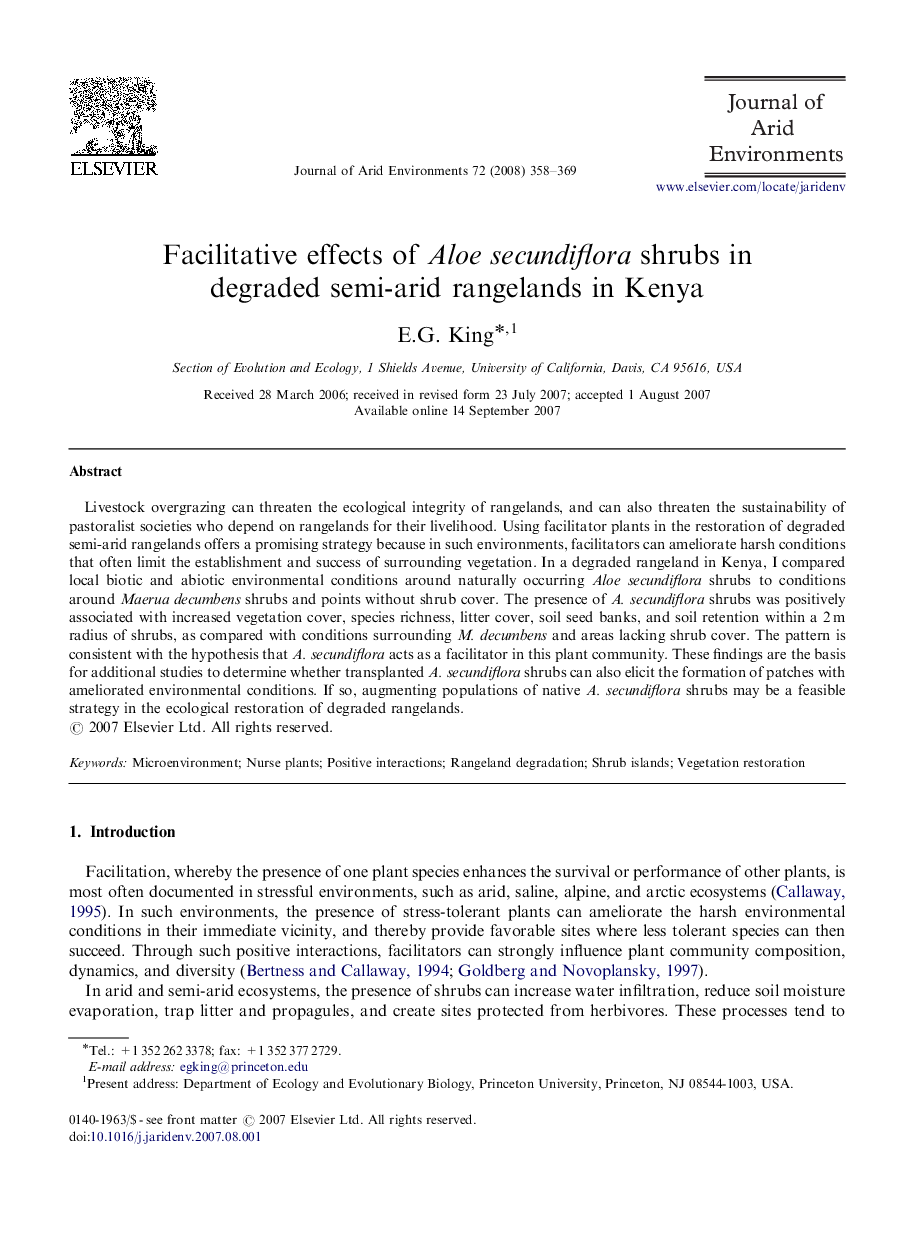| Article ID | Journal | Published Year | Pages | File Type |
|---|---|---|---|---|
| 4394199 | Journal of Arid Environments | 2008 | 12 Pages |
Abstract
Livestock overgrazing can threaten the ecological integrity of rangelands, and can also threaten the sustainability of pastoralist societies who depend on rangelands for their livelihood. Using facilitator plants in the restoration of degraded semi-arid rangelands offers a promising strategy because in such environments, facilitators can ameliorate harsh conditions that often limit the establishment and success of surrounding vegetation. In a degraded rangeland in Kenya, I compared local biotic and abiotic environmental conditions around naturally occurring Aloe secundiflora shrubs to conditions around Maerua decumbens shrubs and points without shrub cover. The presence of A. secundiflora shrubs was positively associated with increased vegetation cover, species richness, litter cover, soil seed banks, and soil retention within a 2Â m radius of shrubs, as compared with conditions surrounding M. decumbens and areas lacking shrub cover. The pattern is consistent with the hypothesis that A. secundiflora acts as a facilitator in this plant community. These findings are the basis for additional studies to determine whether transplanted A. secundiflora shrubs can also elicit the formation of patches with ameliorated environmental conditions. If so, augmenting populations of native A. secundiflora shrubs may be a feasible strategy in the ecological restoration of degraded rangelands.
Keywords
Related Topics
Physical Sciences and Engineering
Earth and Planetary Sciences
Earth-Surface Processes
Authors
E.G. King,
